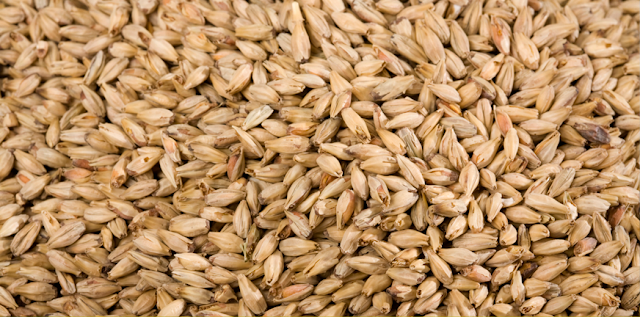For seasoned homebrewers that are really getting into the swing and science of making beersies, they begin to become very cognisant that quality and freshness of ingredients play a crucial role in creating great-tasting beer.
In this guide, we will explore effective techniques for storing these ingredients, including the use of airtight storage containers and vacuum sealers. By following these recommendations and brewing tips, you can ensure that your homebrewing ingredients remain at their best, resulting in exceptionally delicious brews.
1. Understanding Ingredient Storage Basics:
Before delving into specific storage methods, it's important to understand a few fundamentals of ingredient storage for home brewing:
Temperature Control: Keeping your ingredients stored at a cool and consistent temperature is vital for preserving their freshness. Fluctuations in temperature can lead to degradation and flavor loss. Aim for temperatures between 35°F and 50°F (2°C and 10°C), as this range helps slow down the process of oxidation and maintains the stability of the ingredients.
Protection from Light: Light exposure can be particularly harmful to hops, as it can cause them to lose their aroma and bitterness. Similarly, light can affect the quality of grains and yeast. To minimize light exposure, store your ingredients in opaque containers or in a dark area, such as a pantry or cellar (also beer does not enjoy being exposed to light).
Moisture can lead to spoilage and mold growth in ingredients like grains and yeast. Ensure your storage area is dry and free from excess humidity. Avoid storing ingredients in basements or areas prone to moisture. Additionally, use appropriate containers with airtight seals to keep ingredients dry and prevent moisture absorption.
2. Selecting Airtight Storage Containers:
Airtight storage containers are an excellent choice for storing your homebrewing ingredients. They help maintain freshness by keeping out air, light, and moisture.
Here are some recommendations:
Food-Grade Plastic Containers: Choose containers made of food-grade plastic that are specifically designed for long-term storage. Look for containers with airtight seals and consider options with a UV-blocking feature for hop storage. Plastic containers are lightweight, durable, and provide an effective barrier against external elements.
Glass Jars: Glass jars with airtight lids can also be suitable for ingredient storage, especially for smaller quantities. Mason jars, for example, work well for storing hops. Glass containers are non-reactive and do not absorb odors or flavors, making them an excellent choice for preserving the integrity of the ingredients.
Metal Containers: For grains, consider metal containers such as stainless steel canisters or bins. Make sure they are airtight and have a seal to keep moisture out. Metal containers provide an additional layer of protection against light and can help preserve the freshness of the grains.
3. Utilizing Vacuum Sealers:
Vacuum sealers are an effective option for long-term ingredient storage, as they remove air and seal the bags tightly. Here's how to use them:
Invest in a Vacuum Sealer: Purchase a vacuum sealer specifically designed for home use. These devices come with vacuum bags or rolls, which allow you to customize the size of the bags according to your needs.
Bag Preparation: Cut the vacuum sealer bags or rolls to the desired size, leaving enough space for the ingredients. Ensure the bags are clean and dry before use to prevent contamination or moisture buildup.
Filling and Sealing: Place the ingredients in the bag, leaving some room for expansion. Insert the open end of the bag into the vacuum sealer and follow the manufacturer's instructions to remove the air and seal the bag. The vacuum sealer will create an airtight seal, removing the majority of the air from the bag and preventing oxygen exposure, which can lead to ingredient degradation.
Labeling and dating: Once the bags are sealed, it's important to label them with the type of ingredient and the date of packaging. This labeling system will help you keep track of the freshness of your ingredients and ensure you use them in a timely manner.
4. Additional Tips for Ingredient Storage:
Consider these supplementary tips to maximize ingredient freshness:
Purchase Fresh Ingredients: Start with fresh, high-quality ingredients to extend their shelf life. Check the packaging dates and opt for reputable suppliers to ensure you're working with the best possible ingredients.
Store Yeast Properly: Yeast is a sensitive ingredient that can be affected by temperature fluctuations. Check the specific storage requirements of the yeast strain you're using. In general, it's best to store yeast in the refrigerator, following the manufacturer's instructions. Keep it in a sealed container or airtight bag to prevent exposure to air and moisture.
Use Moisture Absorbing Packs: Including moisture-absorbing packs or desiccants in your storage containers can help minimize moisture buildup. These packs are designed to absorb excess moisture and maintain the dryness of the ingredients. They are particularly useful for grains, preventing spoilage and the growth of mold.
Rotate Your Stock: Practice FIFO (first in, first out) by using the oldest ingredients first and replenishing your stock regularly. By rotating your ingredients, you ensure that the freshest ingredients are used in your brews, minimizing the risk of using stale or expired ingredients.
Monitor Storage Conditions: Regularly check the storage area for any signs of issues such as moisture, pests, or temperature fluctuations. Address any problems promptly to maintain optimal ingredient freshness.
Proper storage of brewing ingredients is essential for maintaining their freshness and ensuring the quality of your homebrewed beer. By utilizing airtight storage containers and vacuum sealers, you can protect your hops, grains, and yeast from air, light, and moisture, preserving their flavors and aromas.
Remember to follow the fundamental storage principles of temperature control, protection from light, and moisture prevention. With these storage techniques in place, you'll be well-equipped to create exceptional brews with the freshest ingredients available.
Cheers to your brewing success!






0 comments:
Post a Comment